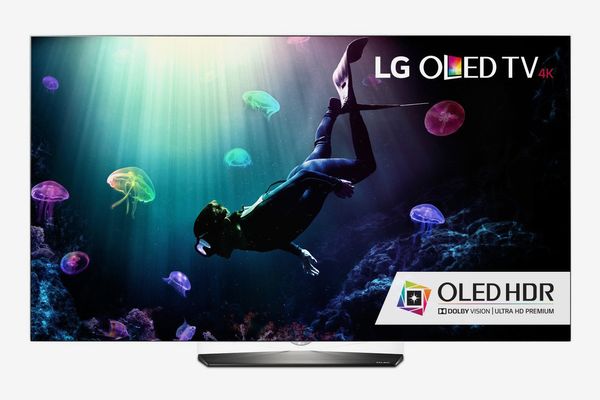
Yes, the Olympics are underway in Pyeongchang, and with all the feats of skill and speed and artistry on display in South Korea, now felt like an appropriate time to celebrate all of the delightful things that originated in the country. From miracle-working beauty products and addictive snacks to Ultra HD electronics and the world’s best dishwashing gloves. Welcome to Made in Korea week on the Strategist.
If you had told me during the 2010 Winter Olympics that the absolute best TV for watching the 2018 Winter Olympics would be made by South Korean company LG, I would have said you were high. Eight years ago, Sony’s plasma screens were at the top of the heap, followed closely by Samsung and Panasonic panels. But in 2018, it’s not open to debate: the best TVs in the world are made by LG, specifically its OLED screens. They’re not cheap — its low-end 55-inch OLED goes for at least $1,600, and its high-end 77-inch screens can cost more than a new Honda Civic — but if you want the best picture (especially when it comes to deep, vibrant colors), no one is doing it better.
What makes an OLED screen so much better than your average LCD or LED screen? It all comes down to how light is produced by an OLED screen. On an LCD or LED television, individual pixels on your screen are shaded a certain color, while a backlight shines through them to produce the picture. Think of it as a Lite-Brite toy where the pegs are always being replaced and shifted around at tremendous speeds, but no matter what, there’s still a light shining behind everything. On an OLED screen, however, each pixel on the screen provides its own color and its own light source.
Where this difference really shines (or, in this case, doesn’t shine) is during night scenes, when TVs need to reproduce dark or complete blackness. On a traditional LCD or LED screen, the pixel on the screen will color itself “black,” but there’s still a backlight shining through. (This is one of the reasons night scenes in TV shows and movies sometimes seem hard to make out.) But on an OLED, when a color is supposed to be truly, completely black, that pixel can just turn itself off and emit no light at all. A pixel on an OLED screen can also become much brighter than those around it — think of scenes with the sun peeking over the ridge of a mountain covered in shadow. Seeing this in action — fiery scenes at night or brightly colored scenes with deep shadows are particularly good — the difference is stark and unmistakable. If you ever find yourself with time to kill, wander into your local big-box retail store, where they’ll have an OLED panel, allowing you to see the difference for yourself.
There are competitors rising to meet LG, but all of these companies source their screens from LG Display (a separate and distinct company from LG Electronics, which makes LG TVs). And while South Korea’s Samsung firmly controls the market for smaller OLED screens — that pretty OLED screen on the iPhone X comes courtesy of Samsung — both Samsung and LG seem content with letting the other control its share of the market.
But OLED screens are also, in the long run, inevitable. While LG’s screens are pricey now, those prices are already dropping from what they were even a year or two ago — it was big news in 2016 if you could find an OLED set for under $2,000 at all. By the time 2026 rolls around, you will almost assuredly be watching someone trying to land a quadruple axel on an OLED screen. And the company making that OLED screen has a very good chance of being LG.
You can get a 55-inch OLED TV that’s surprisingly affordable if you go for a slightly older model from two years ago.
This version — an update of the model above — is just slightly more expensive.
So why does this cost $100 more than the one above? Not to get too technical, but it has better speakers.
Ditto why the E7P costs nearly $1,000 more than the C7P; it has a built-in soundbar (you see it along the bottom edge) for better audio. It also uses LG’s “picture on glass” treatment, for a strikingly thin design.
The 65-inch version of the B7A.
The 65-inch version of the C7P.
The 65-inch version of the E7P (though you should still buy a soundbar if you’re spending this much on a TV).
If price is no object, the 77-inch G7P will give you a massive screen to really soak in everything OLED has to offer.
The Strategist is designed to surface the most useful, expert recommendations for things to buy across the vast e-commerce landscape. Some of our latest conquests include the best women’s jeans, rolling luggage, pillows for side sleepers, ultra-flattering pants, and bath towels. We update links when possible, but note that deals can expire and all prices are subject to change.
Every editorial product is independently selected. If you buy something through our links, New York may earn an affiliate commission.












